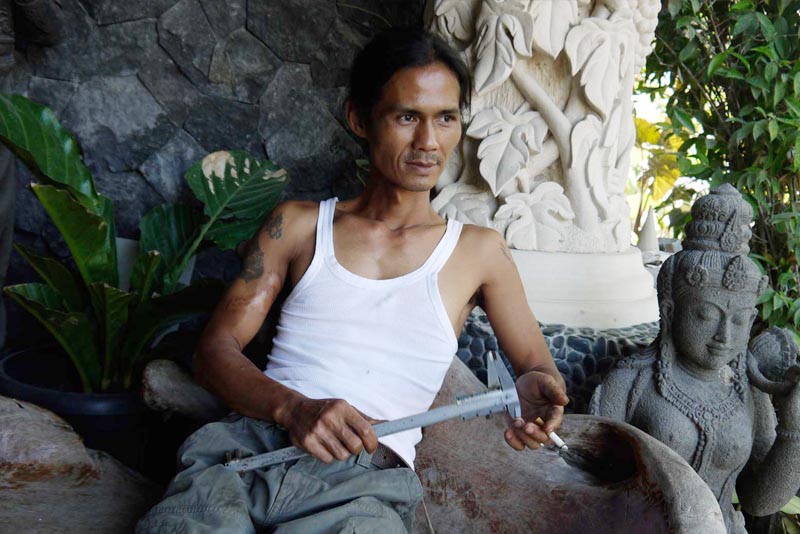His name is Yono, a figure in Indonesia’s stone carving scene who aims at preserving the traditional way of producing the artworks. Nowadays, Yono’s artworks have become one of the best in Indonesia, with the international stone art market keeping a close eye on his creations.
This 41-year-old man has been dealing with the art of stone carving since an early age. Born and raised in a stone carving center not far from Borobudur Temple, Central Java, he now lives in a village just outside of Yogyakarta City with his wife and three children. Creating stone sculptures, Yono also spends his time gardening and tending a rice field around his house.
Yono started his career in producing stone handicrafts at the age of 12, working as a carver. According to him, he developed the skills from what his father and grandfather, both traditional stone carvers in Borobudur area, had taught him.
“If we look at the grandeur of Borobudur Temple, we will be able to see the high skills and great diligence of those who built it,” Yono said.
From the olden days up until today, Borobudur and its surrounding areas have been known as a stone artwork center. Its close vicinity to Mount Merapi, an active volcano, allows artists to have easy access to an abundance of raw materials.
Besides Yono, there are a lot of other stone artists inspired by Borobudur Temple. In his opinion, looking at the temple from afar can lift up the passion and the spirit to carve from the heart. Moreover, its grandeur can inspire and be a source of learning for traditional carvers who are mostly self-taught.
In making his artworks, Yono usually uses volcanic rocks. These are easy to find as he lives not far from the active Merapi volcano. He also uses solid granite stones as well as lime stones created through soil sedimentation which are easy to find on the Island of Java.
He recently discovered another type of stone, which he considers unique. This kind of stone is quite unfamiliar to him, although he likes to call them “primitive stones.” Such stones often obstruct farmers working to till their lands, as their mattocks would hit against them. Receiving this information, Yono initiated the collection of the primitive stones and turned them into artworks. The stones turned out to be excellent materials for making striking sculptures. However, these stones are available only in a limited number in the upper soil layers. Since he is not into mining these stones, he only takes those visible due to natural erosion.
To Yono, a stone carver needs to connect the hands and the soul so that the union becomes consistent. It is this principle that, according to him, makes it easy for him to carve stones modeled after living creatures, producing works of high quality dedicated from the heart.

